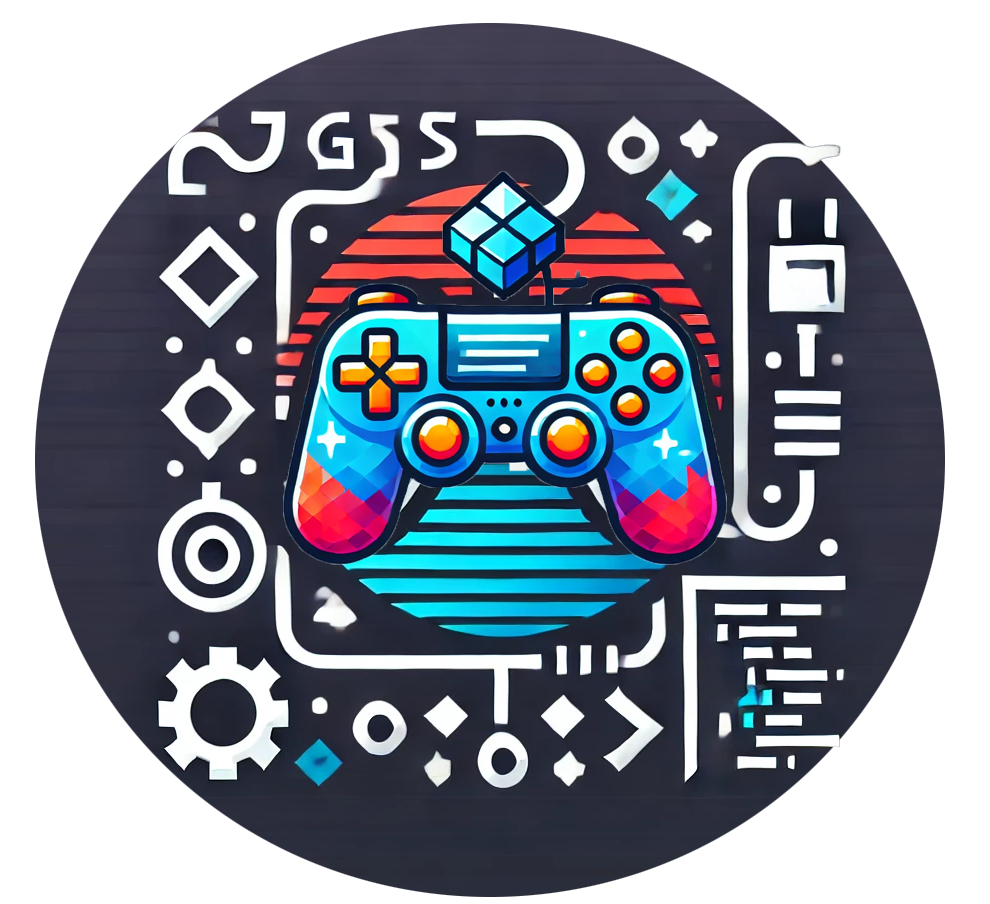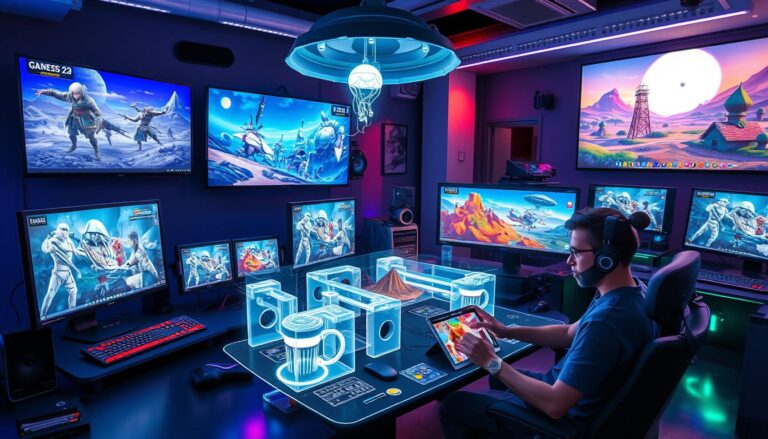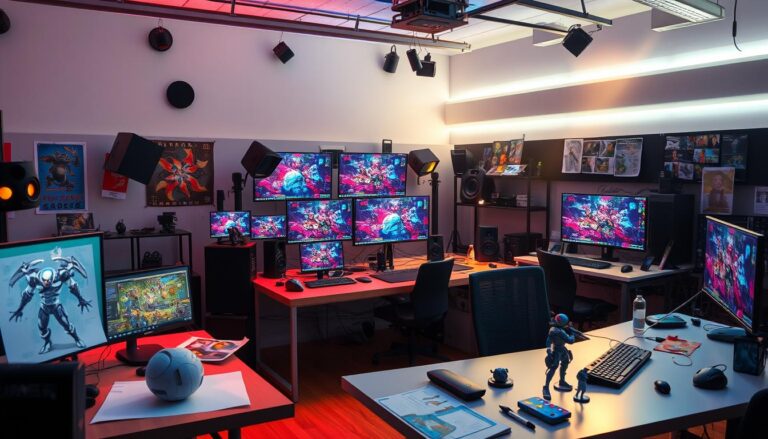How Do You Represent Emotion Through Facial Animation in 3D Characters?
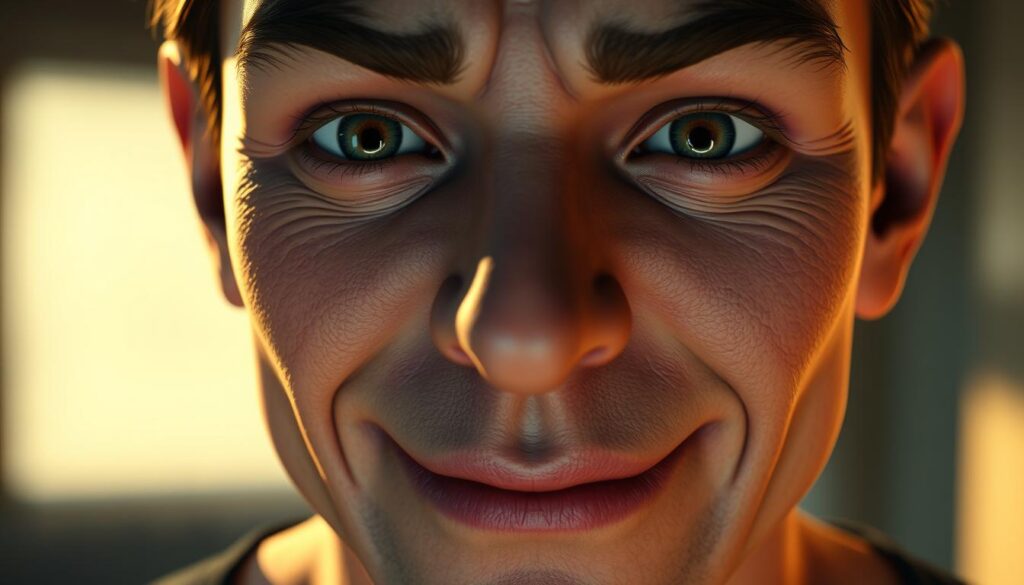
Facial animation is key in 3D game development. It lets us tell stories through digital characters. These characters come to life in virtual worlds.
Game designers know that facial expressions show a character’s feelings. A smile or a frown can tell a lot. It pulls players into the story.
To make facial animations believable, designers need both art and tech skills. They use special techniques that mix human psychology with digital tools.
The goal is to show human emotions in digital characters. Animators must capture and recreate facial movements accurately. They need to be both precise and emotionally true.
This article will explore how game developers create characters with expressive faces. These faces tell stories without words.
Understanding Facial Anatomy for Animation
To make characters look real in Interactive Gaming, you need to know facial anatomy well. Game developers using Unity Development must understand how muscles work together to show emotions.
The human face is made up of many muscles that move together to show feelings. Animators see facial animation as a complex system. They plan out muscle movements to make emotions look real.
Vertical and Horizontal Muscle Groups
Facial muscles are divided into two main groups:
- Vertical muscles that control up and down movements
- Horizontal muscles that control side-to-side movements
These groups work together to show small changes in emotions. Knowing how they move is key to making digital characters seem real.
Key Facial Features and Their Movement
Features like eyes, eyebrows, and mouth are key for showing feelings. Each one adds something special to the expression. This means developers need to be very precise with their animations in Unity Development.
Impact of Muscle Interactions
When muscles work together, they create deep emotions. One muscle move can change the whole face’s look, changing how we see the character’s feelings.
Learning about these detailed muscle movements helps game developers make games that feel more real and touch our hearts.
Essential Tools and Techniques in 3D Game Development
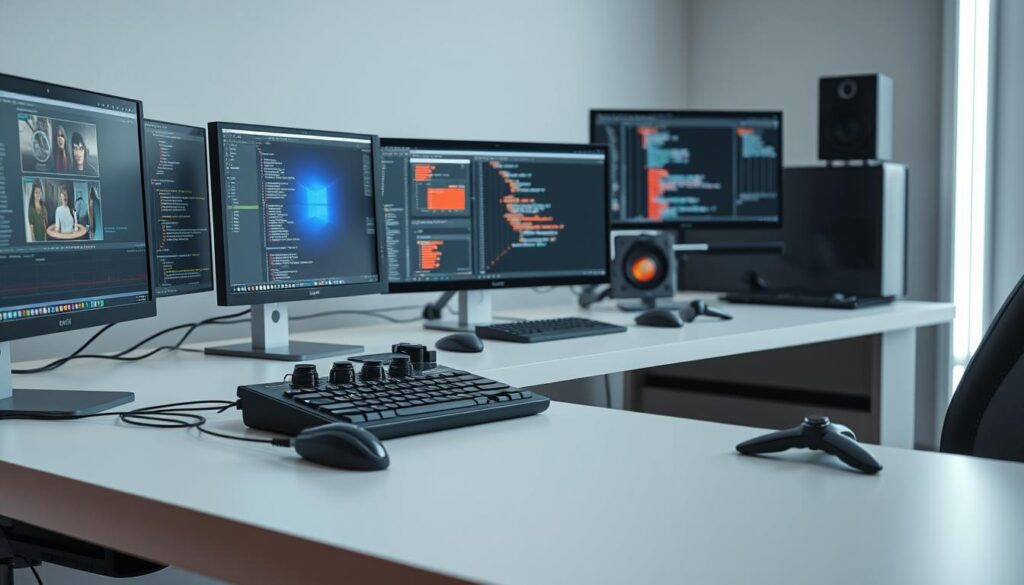
Creating 3D characters for games needs advanced techniques for facial animations. Game Engine Development has changed how developers make characters look real. Now, they can capture detailed emotional expressions.
Keyframe animation is key for making facial movements look real. Animators use special rigs to control each muscle. This makes characters’ expressions look natural and detailed.
- Control Rig Manipulation
- Keyframe Animation Techniques
- Muscle Group Targeting
Professional game developers use many ways to improve facial animations:
| Technique | Primary Function | Complexity Level |
|---|---|---|
| Keyframe Animation | Manual muscle movement control | Intermediate |
| Procedural Animation | Automated expression generation | Advanced |
| Motion Capture Integration | Real-time facial tracking | Expert |
Modern game engines offer powerful tools for Game Programming. They make creating facial animations easier. Developers can now make characters that feel more real and emotional.
Using advanced animation tools lets developers make characters more expressive. This changes how players feel when they play games.
Creating Expressive Eyes and Eyebrows
Facial expressions are key in Virtual Reality Games and Augmented Reality. The eyes and eyebrows show complex emotions. They turn digital characters into living beings.
Developers and animators need to grasp the language of eye and eyebrow movements. This is to make character interactions truly immersive.
Eye Movement Patterns
Different eye movements mean different emotions:
- Wide eyes: Show surprise, fear, or excitement
- Narrow eyes: Mean anger, suspicion, or focus
- Downward gaze: Shows sadness, shyness, or deep thought
- Upward glance: Means hope, thoughtfulness, or daydreaming
Eyebrow Positions for Different Emotions
Eyebrow positions are key in Virtual Reality Games:
- Raised eyebrows: Show surprise or doubt
- Furrowed brows: Mean anger or deep focus
- Slightly arched eyebrows: Show curiosity or mild worry
Timing and Synchronization
Timing is everything in making emotions believable. Animators must match eye and eyebrow movements. This makes character interactions in Augmented Reality real.
By learning these small but important details, developers can create characters that touch users deeply. This makes digital worlds more immersive and engaging.
Mastering Mouth Animations and Expressions
Mouth animations are key in 3D game development. They turn digital characters into living, breathing beings. Game designers know that small lip movements can show complex emotions better than any other facial feature.
To make mouth animations look real, game developers need to know a few important things:
- Analyzing natural speech patterns
- Mapping muscle movements
- Synchronizing lip movements with dialogue
- Capturing micro-expressions
Different mouth shapes mean different emotions. A slightly parted lip might show curiosity. A wide-open mouth could mean surprise or excitement. Skilled game designers use these small details to make character interactions feel real.
Here are some key techniques for mastering mouth animations:
- Reference real-world facial movements
- Use advanced motion capture technologies
- Implement procedural animation systems
- Conduct iterative refinement
Game designers must focus on getting lip-syncing right. If mouth movements don’t match the dialogue, it can ruin the game’s feel. It breaks the connection between the player and the character.
| Mouth Position | Emotional Interpretation | Animation Complexity |
|---|---|---|
| Slightly Open | Mild Interest/Contentment | Low |
| Wide Open | Surprise/Excitement | Medium |
| Tightly Closed | Anger/Frustration | High |
By using advanced 3D game development, designers can make mouth animations that bring digital characters to life. This makes the gaming experience better for everyone.
Advanced Motion Capture Technologies
Motion capture has changed game programming and virtual environments. It lets developers make character animations look real. This tech tracks human movements and facial expressions with great detail.
Game developers use advanced motion capture systems. These systems make digital characters seem alive. They connect real human actions with virtual ones.
Real-time Facial Tracking
Modern facial tracking gives game programmers amazing tools. They can capture detailed expressions. The main methods are:
- Optical marker tracking
- Markerless camera-based systems
- Infrared depth sensing
- Electromagnetic tracking
Data Processing Methods
Turning raw motion data into smooth animations is complex. Developers use advanced algorithms to improve captured movements.
| Processing Technique | Primary Function |
|---|---|
| Interpolation | Smoothing movement transitions |
| Noise Reduction | Eliminating tracking artifacts |
| Keyframe Optimization | Enhancing animation precision |
Integration with Animation Software
Connecting motion capture data with animation tools is key. It lets developers create immersive virtual environments. Software like Autodesk MotionBuilder and Metahumans make this easy.
By using advanced tracking and smart processing, game programmers create lifelike animations. These animations make games more engaging and stories more compelling.
Secondary Facial Features and Micro-expressions
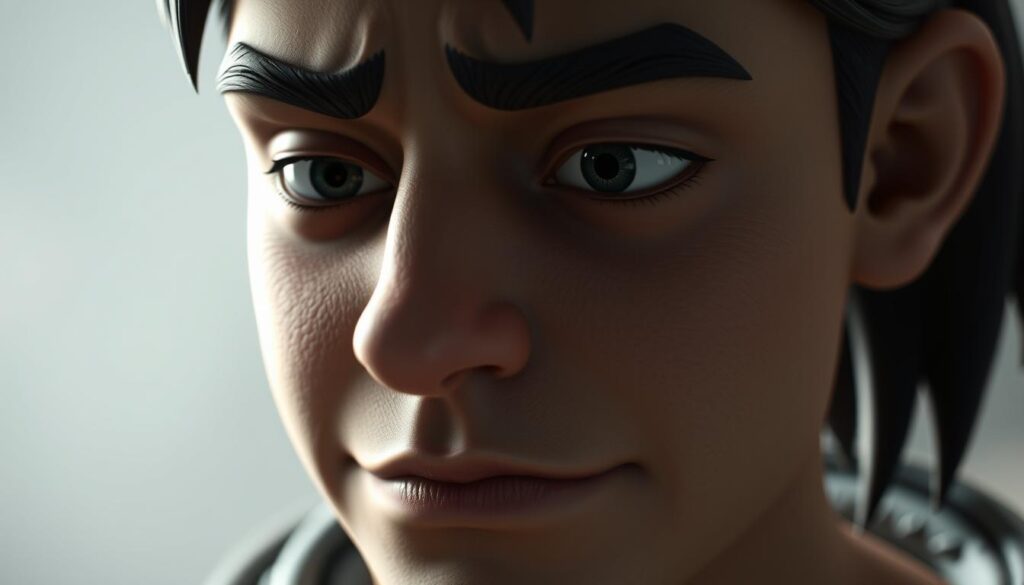
In Interactive Gaming, it’s not just about the eyes and mouth. Secondary facial features are key to making character animations in Unity Development feel real.
Micro-expressions show deep emotions through tiny muscle movements. Animators pay close attention to three main secondary facial features:
- Cheeks: Dynamic muscle shifts indicate emotional intensity
- Nostrils: Subtle dilation shows emotional responses
- Chin: Minute trembling signals emotional tension
These small movements turn digital characters into living beings. In Unity Development, detailed facial animation techniques help create characters with deep emotions.
| Feature | Emotional Indication | Animation Complexity |
|---|---|---|
| Cheek Movement | Joy, Excitement | Medium |
| Nostril Dilation | Anger, Stress | Low |
| Chin Trembling | Sadness, Fear | High |
Professional animators use advanced tracking tech to capture these detailed movements. They aim to make characters show realistic emotional responses. The goal is to create seamless, authentic interactions that pull players into the game.
Testing and Refining Emotional Animations
Creating perfect emotional animations in Game Engine Development is a detailed process. Developers must make facial expressions that show different emotions well. They need to work on these animations for various platforms and settings.
Believable animations need thorough testing. This goes beyond just designing them. Augmented Reality apps, for example, need to show emotions clearly to keep users interested and involved.
Quality Assurance Methods
Ensuring facial animations are top-notch involves several steps:
- Checking how animations look from different angles
- Simulating different lighting conditions
- Testing how animations work on different platforms
- Measuring how well animations perform
Iteration Processes
Improving emotional animations involves a few key steps:
- Creating a first version of the animation
- Gathering feedback from others
- Looking closely at how well the animation shows emotions
- Making technical and artistic tweaks
Performance Optimization
To make facial animations run smoothly, developers use special techniques:
- Reducing the number of polygons
- Smartly managing keyframes
- Scaling the animation’s resolution as needed
- Using smart rendering methods
Game Engine Development is always getting better at emotional animation. This work helps make digital characters seem more real and lifelike.
Conclusion
Facial animation is key in 3D game development. It makes digital characters feel real and emotional. Developers who get good at this can make games that feel more real and touch players’ hearts.
Creating realistic facial expressions is hard. It needs skill, creativity, and a deep understanding of human bodies. Game designers must keep learning new ways to capture movements and improve digital characters.
As virtual reality games grow, facial animation will play a bigger role. It will help tell stories and keep players interested. The future of games is about making characters that show emotions in a new way.
Developers who focus on facial animation will shape the future of games. They will use new tech and aim for true emotional connection. This will make virtual characters seem alive and real.
